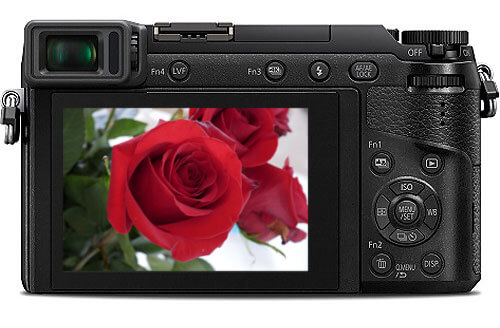Living with the Lumix GX85
Today’s Post by Joe Farace
Recently I wrote about using the Panasonic Lumix GX85 that was a birthday gift from my wife, Mary. As I mentioned, there’s a lot to like about this camera. The build quality is substantial; it feels like a real camera. And image quality is superb. But as I mentioned previously it’s not without some quirks.
 In that previous post I talked about the lack of an external battery charger and offered a free solution for GX7 owners and an under ten buck solution for the rest of us. But while Panasonic has always had, what I felt, a pretty good user interface, they seemed obsessed with changing things that don’t need changing. Take exposure compensation: On the Lumix G5 and G6 there’s a toggle on the camera’s top that’s perfect for adjusting exposure compensation. It’s gone on the G7.
In that previous post I talked about the lack of an external battery charger and offered a free solution for GX7 owners and an under ten buck solution for the rest of us. But while Panasonic has always had, what I felt, a pretty good user interface, they seemed obsessed with changing things that don’t need changing. Take exposure compensation: On the Lumix G5 and G6 there’s a toggle on the camera’s top that’s perfect for adjusting exposure compensation. It’s gone on the G7.
 One of the most important things for me is to be able to change ISO settings simply and quickly and the GX85 gives you a nice button on the four-way controller on the camera’s back. The second most important thing for me is exposure compensation. Finding it on the GX85 was a challenge. There is no menu item or physical control (at least not obvious) for exposure compensation. While there are nine—count’em—custom function buttons none of them can be programmed for exposure compensation.
One of the most important things for me is to be able to change ISO settings simply and quickly and the GX85 gives you a nice button on the four-way controller on the camera’s back. The second most important thing for me is exposure compensation. Finding it on the GX85 was a challenge. There is no menu item or physical control (at least not obvious) for exposure compensation. While there are nine—count’em—custom function buttons none of them can be programmed for exposure compensation.
 I did the unthinkable and looked at the manual on-line
. The PDF does not have a search feature but I found exposure compensation under “compensating the exposure.” You activate exposure compensation, along with bracketing and flash bracketing, by pushing the rear control wheel. This breaks every rule in human factors engineering: wheels roll, buttons push. Before learning how to do this I made a slightly underexposed picture of Mary after our 34th anniversary dinner. I fixed it using the techniques shown here
but would have preferred to do it in camera.
I did the unthinkable and looked at the manual on-line
. The PDF does not have a search feature but I found exposure compensation under “compensating the exposure.” You activate exposure compensation, along with bracketing and flash bracketing, by pushing the rear control wheel. This breaks every rule in human factors engineering: wheels roll, buttons push. Before learning how to do this I made a slightly underexposed picture of Mary after our 34th anniversary dinner. I fixed it using the techniques shown here
but would have preferred to do it in camera.
John Roque came to my rescue by telling me what the manual should have: “If you look In the wheel settings in camera. There’s an option for exposure compensation” that can be assigned either to the top or back wheel. This is intuitive and a much better way to do it. Thanks to John, I now know how to do it —and so do you. And I still love this camera.
 Along with photographer Barry Staver, Joe is co-author of Better Available Light Digital Photography that’s now out-of-print but new copies are available at collector (high) prices or used copies for giveaway prices—less than six bucks—from Amazon.
Along with photographer Barry Staver, Joe is co-author of Better Available Light Digital Photography that’s now out-of-print but new copies are available at collector (high) prices or used copies for giveaway prices—less than six bucks—from Amazon.



